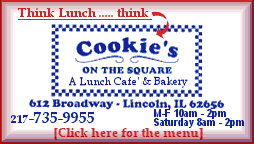|
The first patent ever
issued went to architect Filippo Brunelleschi of Florence, Italy,
for his method of transporting goods up the Arno River in 1421. The
patent lasted three years. American patents were originally issued
by individual states, and the first state patent went to Samuel
Winslow of Massachusetts in 1641 for his new method of making salt.
After Congress enacted federal patent laws in 1790, President George
Washington personally signed each patent, as was customary at the
time. That same year Secretary of State Thomas Jefferson, a prolific
inventor himself, became the first patent commissioner, even though
he originally opposed patents because he considered them to be an
unfair monopoly.
The first federal U.S. patent was issued to Samuel Hopkins of
Vermont for his method of making potash. The fee? A whopping $4!
Today, patent fees average $4,000.

Prior to being issued patent numbers, patents contained the
inventor's name and date of the patent. More than 10,000 patents had
been issued without numbers when a fire destroyed most of them in
1836. Ironically, the patent office was housed in the same building
in Washington, D.C., as the fire department. D'ohhhh!
A Mr. John Ruggles received U.S. Patent 1 for his "traction
wheels." Patent 1,000,000 was issued in 1911 to Francis Holton for
his new type of vehicle tire. Mary Kies is believed to be the first
woman to receive a patent, for her process of weaving straw with
silk in 1809. I use the word "believed" because women were not
allowed to own property during parts of the 1700s and 1800s. As a
result, there may have been other women prior to Mary Kies who
received patents by using only their initials, while other women
simply filed for patents in their husband's name.
[to top of second column]
 |

The federal patent laws that Congress enacted in 1790 also
governed trademarks and copyrights. A trademark is a word or symbol
that identifies the source of a product or company. The world's
first trademark is believed to be for two British chefs named Crosse
& Blackwell in 1706. It is still in use today -- the trademark, that
is, not the chefs!
Trademarks can be based on people, such as the leprechaun
symbolizing Notre Dame's Fighting Irish, the Gerber baby and the
Morton Salt girl. Or they can be based on animals, such as the MGM
lion, Smokey Bear and Borden's top sales lady, Elsie the cow.
Copyrights, on the other hand, protect literary works such as
books, plays, articles, poems, songs, movies, pictures and
paintings. Even this article is copyright-protected. A copyright
lasts for the life of the author plus another 70 years.
So how does one know whether a product has been patented,
trademarked or copyrighted?
A patented product contains the patent number on the packaging; a
trademarked product is shown with the ™ symbol or an "R" inside a
circle, ®, if it's a registered trademark; and copyrighted material
contains a "C" inside a circle, ©, along with the year and name of
the copyright owner.
Paul Niemann may be reached at
niemann7@aol.com.
Copyright Paul Niemann 2007
(Column from Paul Niemann)
(Other
columns)
 |